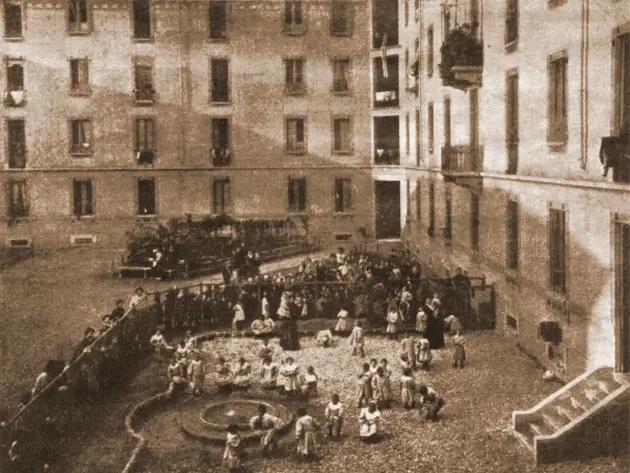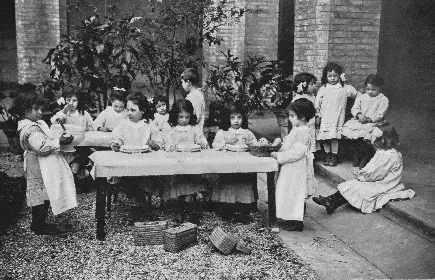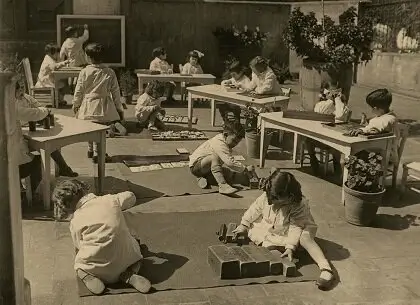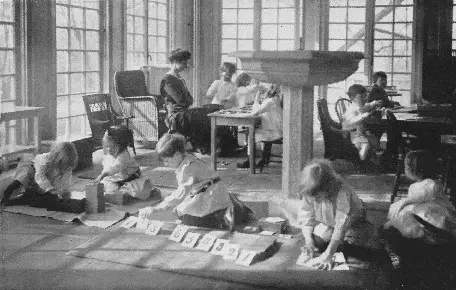Unit 2 (M1): Casa dei Bambini – The Beginning
Casa dei Bambini
The Beginning
This unit focuses on how the development of the Montessori Method began in Casa dei Bambini, the first Montessori house of children, as Dr. Maria Montessori started experimenting with the materials she had developed for children with special needs.
- – Please watch the video presentation above and continue reading the lesson below.
- – Refer to Chapter One of Module 1 (Introduction to Montessori) for further reading.

Casa dei Bambini: The Origin of the Montessori Method
A New Beginning
The Montessori Method began in 1907 when Dr. Maria Montessori opened her first Casa dei Bambini (Children’s House) in a poor district of Rome. Here, she set out to apply her educational principles, originally developed for children with special needs, to typical children. Despite harsh conditions—one untrained teacher, 50 children aged 2 to 5, and extreme poverty—Dr. Montessori was determined to create a nurturing learning environment.

The First Steps
At the Casa dei Bambini, children stayed all day while their parents worked. The program provided meals, medical care, and even baths. Initially, the children were unruly and resistant. To counter this, Dr. Montessori began by teaching practical life skills, like cleaning and gardening, and introduced hands-on materials for puzzles, sensory exercises, and fine motor skills. Surprisingly, the children showed an immediate natural interest in these activities and began engaging for extended periods.
Practical Skills and Independence
Montessori noticed that activities like dressing, cleaning, and serving meals gave children independence and boosted their confidence. Older children began taking responsibility for maintaining the classroom, and discipline issues quickly disappeared. The transformation was so remarkable that Montessori remarked, “I followed the children, and they taught me how to teach them.”
The Role of the Teacher
Montessori believed the teacher’s role was not to impose learning but to observe each child’s needs and guide their development. She likened educators to doctors, saying it’s their job to create the right environment for children to thrive, just as a physician helps the body heal.
Learning Explosions
Children at the Casa dei Bambini showed a natural eagerness to learn. They begged to read, write, and work with numbers. Using specially designed materials, they quickly mastered reading, basic math, and even advanced concepts like addition, subtraction, and multiplication. Montessori discovered that children had an incredible capacity for academic learning when given the right tools and freedom.

Beyond Academics
The children’s interests expanded to geometry, geography, history, and science. Montessori stayed up nights designing new materials to meet their curiosity. Unlike toys, which briefly caught their attention, the children consistently returned to learning materials. Montessori observed that they preferred meaningful “work” over play during school hours.
Continuous Experimentation
The Montessori Method didn’t start out perfect—it evolved through observation and experimentation. One pivotal moment occurred when children, left unsupervised, took materials from a locked cupboard and started working independently. Realizing their ability to self-select activities, Montessori replaced the locked cabinet with open shelves, giving children constant access to materials. This simple change revolutionized education by prioritizing independence and child-led learning.

A Lasting Impact
Dr. Montessori’s innovative methods showed that when children are given freedom within structure, they naturally gravitate toward meaningful learning. Her discoveries challenged traditional education and laid the foundation for a system that empowers children to reach their full potential.
The Casa dei Bambini was more than a school—it was a breakthrough that revealed the unlimited potential of children when they are guided, not directed. It’s a legacy that continues to inspire educators worldwide.

1 Comment
Maria’s experiment was able to impact and change the lives of so many lives.